
A noted historian says those three letters are C-I-A. And even more, that Lennon was betrayed by Yoko Ono. Far-fetched? Before you scoff, look at the evidence this respected professor has finally decided to release after sitting on it for 41 years.
The Sixties era officially ended just before 11:00 p.m. EST on December 8, 1980.
That is when former Beatles member John Lennon, a major voice of the era’s social movement who wrote the peace anthems “Imagine” and “Give Peace a Chance,” was shot and killed just outside the Manhattan apartment that he shared with his wife, Yoko Ono, and five-year-old son Sean.

Mark David Chapman, a 25-year-old from Fort Worth, Texas, was arrested yards from where the murder took place holding a copy of J. D. Salinger’s book, The Catcher in the Rye.
Chapman told police that he had acted alone. Subsequently, Chapman pleaded guilty to second-degree murder and was sentenced to a prison term of 20 years to life, with a stipulation that mental health treatment would be provided.
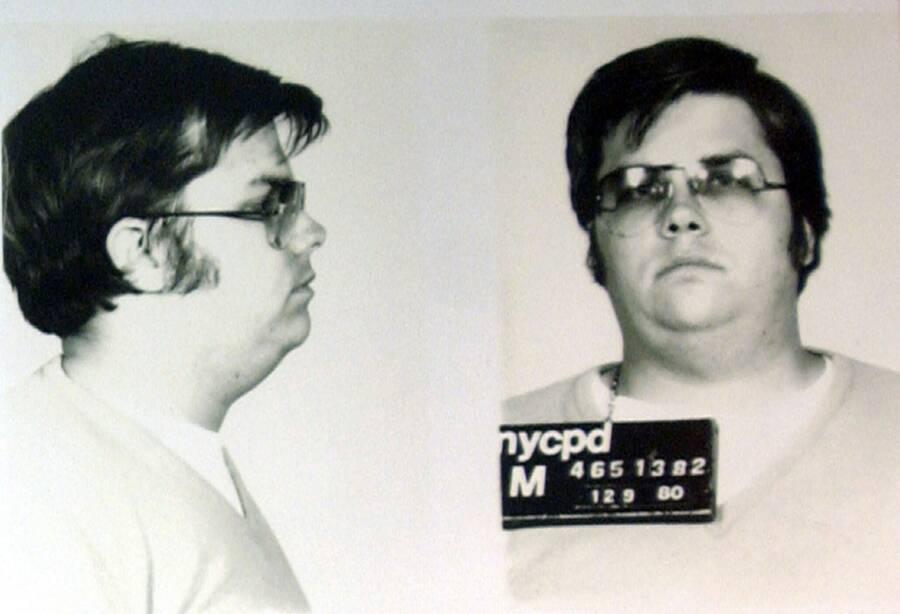
Over the decades, Chapman has given conflicting reasons for why he killed Lennon, citing his spiritual beliefs, his own desire to become famous, and even that killing Lennon would help promote The Catcher in the Rye.[1]

Problem with the Official Story—and a CIA Connection
There is one major problem with the story of Chapman as Lennon’s lone assassin: Lennon was struck by four bullets on the left side of his body when Chapman was on his right side. Medically verified accounts of John’s bullet wounds (according to the surgeon and nurses who treated John in the emergency room and washed his body immediately after) further prove that Lennon was shot from the front and not back, which means means that Chapman could not have been the killer based on where he was standing.[2]
There was a man who was standing on Lennon’s left when Lennon was shot: the doorman.
He was identified in 1987 by People magazine’s James Gaines as José Sanjenís Perdomo, an anti-Castro sniper who was part of the CIA’s Cuban exile invasion of Cuba in April 1961.
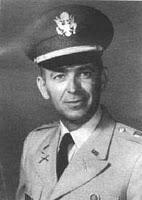
In pre-Castro Cuba, Perdomo had been a Chief of Police under the regime of Carlos Prios and dictator Fulgencio Batista.[3]
Allegedly, he helped coordinate a CIA assassination squad in Cuba and was the control officer that CIA assigned to Frank Sturgis when Sturgis joined the CIA in 1958 (Sturgis was involved in both the JFK assassination and Watergate break-in).
If the CIA were behind Lennon’s death, its motive was clear: Lennon was an icon of the 1960s peace movement who was planning to revitalize his musical career and could inspire a regeneration of peace and progressive activism in the 1980s to counter the Reagan revolution.[4]

In the 1970s, the FBI had carried out a large-scale surveillance operation against Lennon, who was also targeted by the CIA’s Operation CHAOS.
Lennon was feared because he funded financially troubled underground newspapers, sang songs for social justice and supported radical causes, including an organization that registered young voters opposed to the Vietnam War.

The FBI attempted to get municipal police to arrest Lennon on drug charges. British MI5 also targeted him because of his support for the Irish Republican Army (IRA).
The U.S. Immigration and Naturalization Service (INS) tried to have Lennon deported in a campaign spearheaded by former Dixiecrat Senator Strom Thurmond (R-SC).[5]
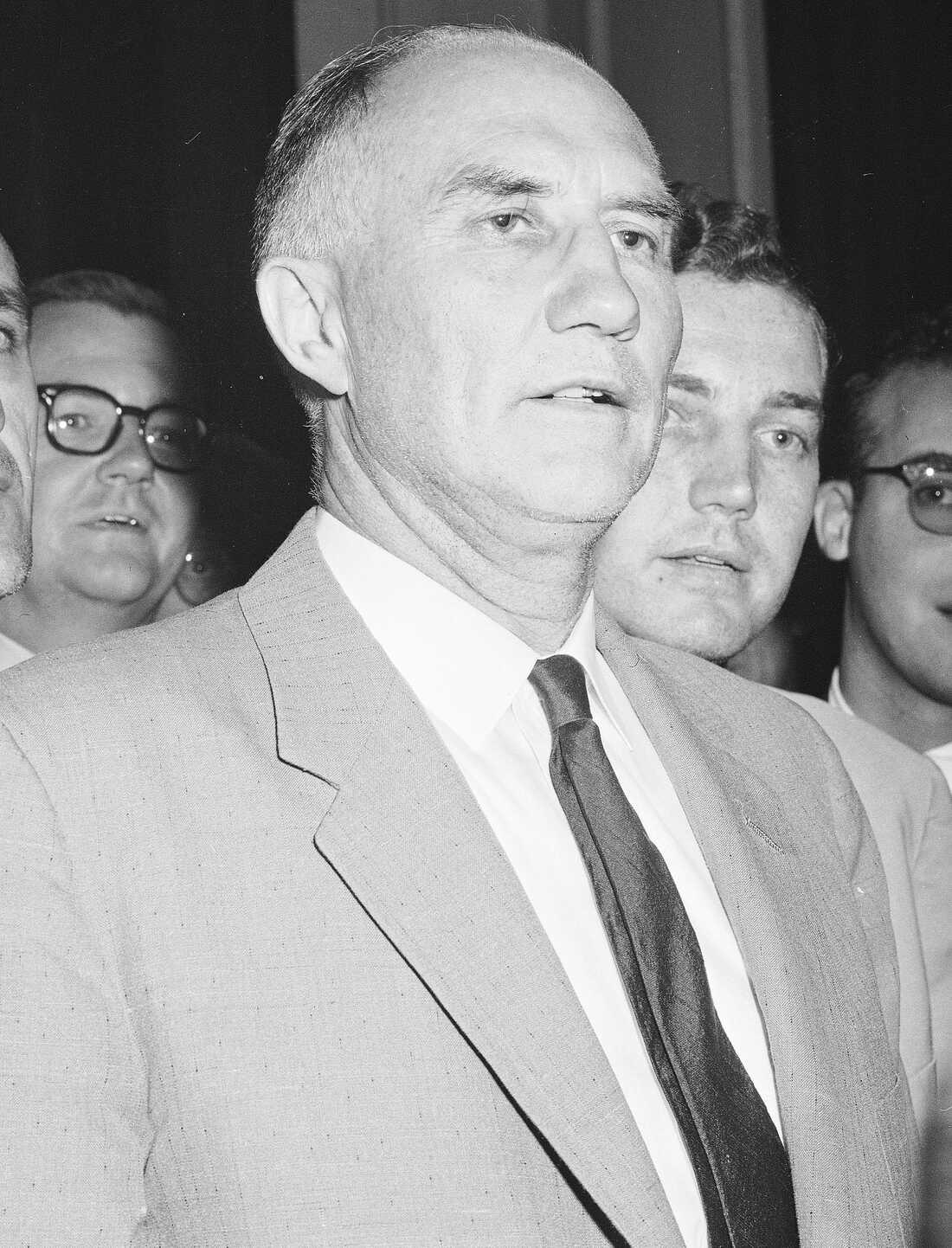
On the evening of Lennon’s death, once John and Yoko left for John’s last recording session at about 4 p.m., Perdomo spent the next six and a half hours chatting with Chapman.[6] What about one can only surmise.

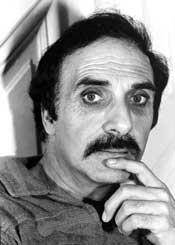
Typically, it is crucial to the establishment of guilt or innocence that the police conduct forensic tests of the gun or bullets—which in the case of Lennon’s murder they did not do.[7]
After Chapman dropped his gun, Perdomo ordered elevator operator Joseph Many to pick up the gun and bring it to a storage room downstairs. It was then removed but no fingerprint tests were taken by the police—though care was taken to preserve the fingerprints from the copy of The Catcher in the Rye that Chapman had been holding and dropped when the police arrived.
One of the first police officers at the murder scene, Peter Cullen, believed that a handy-man had pulled the trigger but Perdomo convinced him otherwise. A witness pointed to the left side of Lennon, saying “he’s the one that did the shooting,” referring to Perdomo.[8]
British author David Whelan who spent three years researching Lennon’s death emphasized that in the official story Chapman shot Lennon from 25 feet away when the medical reports made clear that the bullets entered Lennon from close quarters.
25 feet is a vast distance for an untrained marksman like Chapman. Dr. David Halleran, who treated Lennon, stated: “not even a Navy SEAL could pull it off at that distance.”[9]
Lt. Arthur O’Connor, who grilled Chapman in the police precinct, said that Chapman clearly had not committed the murder to make himself famous as he “didn’t want to talk to the press from the very start” and was “apprehensive about his wife finding out from the media.”
O’Connor said that Chapman “did not want the notoriety. He did not want the glory of a trial either,” adding significantly that “it’s possible Mark could have been used by somebody. I saw him the night of the murder. I studied him intensely. He looked as if he could have been programmed.”[10]
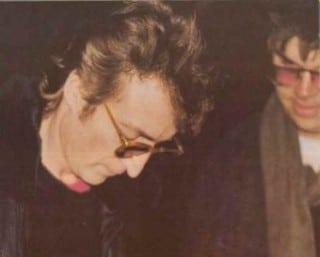
Was Chapman a Manchurian Candidate?
According to author Fenton Bresler, Mark David Chapman resembled Sirhan Sirhan, the patsy in the RFK assassination, in meeting all the criteria for having been pre-programmed and brainwashed.[11]
After Lennon’s killing, Chapman was found calmly reading J.D. Salinger’s The Catcher in the Rye and surrendered to the NYPD meekly when there was a subway 75 feet away and he could have easily escaped. Chapman had become obsessed with The Catcher in the Rye, casting himself as the book’s lead character, Holden Caulfield, inscribing a note in his copy of the book: “To Holden Caulfield from Holden Caulfield.”[12]

Chapman’s manufactured obsession with The Catcher in the Rye was clearly crucial to the whole operation. Not only was the goal to kill a leading icon of the 1960s movement, which the CIA wanted crushed, but it was also to try to associate Lennon with the phoniness of the adult world that Holden Caulfield, another icon of the 1960s movement, disdained.
Chapman directly referred to Lennon as a phony, stating: “He told us to imagine no possessions [in his 1971 song Imagine] and there he was, with millions of dollars and yachts and farms and country estates, laughing at people like me who had believed the lies and bought the records and built a big part of their lives around his music.”
Chapman’s denigration of Lennon fit well with a campaign in popular culture to portray hippies as hypocritical narcissists and antiwar activists as having spat upon Vietnam veterans when few if any such incidents actually took place. The effect was to help shift American political culture to the right and prevent the reemergence of youthful rebellion in the 1980s—as C. Wright Mills’ “power elite” desired.
In Attica Prison, Chapman received the best accommodations of any prisoner, suggesting that there were powerful people protecting him. He was visited by ministers of the fundamentalist Christian Church to which he belonged who doubled as U.S. military intelligence officers.
Chapman had converted to evangelical Christianity in 1971 after a period of heavy use of mind-altering drugs. He had rebelled against his abusive father, David Curtis Chapman, a Staff Sergeant in the U.S. Air Force who worked for the American Oil Corporation (AMOCO).

In his book Careless Genius: John Lennon and His Maternal Demon, Anthony Gronowicz emphasizes that Chapman’s conversion from drug abuse to Christian fundamentalism made him a suitable target for the command hallucination he may have experienced. New religious converts are considered easy to manipulate because their conversion is associated with a heightened emotional state.

According to UC Berkeley Professor Richard Ofshe, after the formal termination of the CIA’s Operation MK-ULTRA in 1973, the operation continued to be carried out secretly through religious cults.
MK-ULTRA involved mind-control and brainwashing experiments that the CIA carried out in an attempt to manipulate, condition and control people.
RFK’s assassin, Sirhan Sirhan, is believed to have been hypnotized under MK-ULTRA and programmed into an assassin who was set up as a patsy. His trigger appeared to be a woman in a polka-dot dress, and he appeared, like Chapman, to be calm after the killing and dissociated from the evil in which he had participated.[13]

A person linking Sirhan Sirhan and Chapman is Bernard Diamond, a forensic psychiatrist who hypnotized Sirhan and testified at his trial and also visited Chapman in prison. Chapman was also visited by Dr. Richard Bloom, an expert hypnotist with a previous career in intelligence and the military, and Milton Kline, another expert hypnotist and CIA consultant who once said he could “create a patsy in three months” and “an assassin in 6 [months].”[14]
According to journalist David Whelan, Chapman was admitted for psychiatric care to Castle Memorial Hospital in Hawaii which was run by Seventh Day adventists who provided human guinea pigs for the U.S. military. Chapman was also influenced by a cabal of evangelical Christian preachers with deep ties to intelligence and the military. Among them was Stephen Olford, who offered to pay for some of Chapman’s legal costs and was great friends with Billie Graham and through him, Richard Nixon.

In 1975, Chapman worked for the YMCA in Beirut. In Inside the Company: A CIA Diary, Philip Agee recounts how, when he worked for the CIA in Ecuador in 1962, his cover was as manager of the Quito YMCA where he managed the YMCA basketball team.
Lebanon at the time Chapman was there was the first Middle Eastern nation to request U.S. troops under its rightist Christian president to crush a mostly leftist Muslim uprising.[15]
After his return to the U.S., Chapman was flown to Fort Chaffee, Arkansas, to assist David C. Moore, the new Director for the re-education and re-settlement of anti-Communist Vietnamese refugees.[16]
After a trip around the world, he settled in Hawaii, a place with a strong U.S. military presence. He joined a small music club in which John W. Hinckley Jr., who tried to assassinate President Ronald Reagan on March 30, 1981, was already a member.[17]
Hinckley Jr. was connected with the Bush family; he had helped George W. Bush in an unsuccessful campaign for Congress in 1978 and his brother Scott, President of Vanderbilt Energy Corp., a company bailed out by Vice President George H.W. Bush’s Zapata Oil, was scheduled to have dinner with Neil Bush, Bush’s son, the night after the assassination attempt.
John Hinckley, Sr., the founder of Vanderbilt Energy Corp., had also raised funds for George H.W. Bush’s political campaigns, and financed an evangelical charity, World Vision International, that served as a cover for CIA operations.[18]
All these latter coincidences are just too much. Chapman’s ties to Hinckley and Hinckley’s ties to Bush—CIA Director in 1975 who worked as an undercover CIA asset in the 1960s—point to the likelihood of their involvement in a conspiracy that connects the murder of John Lennon and Reagan assassination attempt and was designed to shift the political landscape during the 1980s.
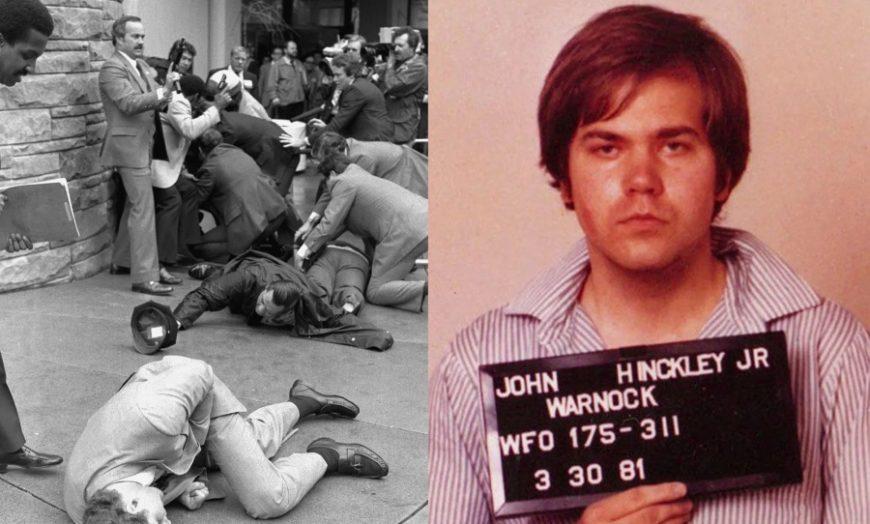
CIA-Linked Lawyers and a Convenient Guilty Plea
Chapman’s defense lawyer, Jonathan Marks, who used Milton Kline’s hypnotism skills to win some of his cases, worked out of Rockefeller plaza in New York, which housed Donovan, Leisure, Irvine and Newton, a law firm founded by OSS founder “Wild Bill” Donavan that employed many CIA personnel, including ex-CIA Director William Colby.
Considered the CIA’s very own law firm, Donovan, Leisure, Irvine and Newton had influence on Chapman’s case because Marks worked with one of its staff, David L. Suggs, who was his assistant.
Marks and Suggs urged Chapman to plead guilty (Chapman claimed to have been told by God to plead guilty following a session with one of the CIA hypnotists), which avoided a trial that could have revealed the conspiracy behind Lennon’s assassination—as the CIA wanted.

David L. Suggs [Source: nypost.com]
Suspicion Cast on Yoko Ono
According to Gronowicz, Lennon’s widow Yoko Ono’s behavior was very suspicious around the time of the assassination. She had his body cremated on December 10, a mere 36 hours after Lennon was shot.
In Careless Genius, Anthony Gronowicz depicts Ono as a manipulative woman who cashed in on Lennon’s death by taking charge of his estate and forcing family members to buy back some of Lennon’s artifacts.[19] By 2022, Ono’s fortune had grown to $700 million.

An upper-class heiress, Ono was the great-granddaughter of the founder of the Bank of Tokyo, Zenjiro Yasuda. Her father was appointed president of the Bank of Tokyo in New York and she attended Sarah Lawrence College, among the most expensive U.S. colleges.
Prior to John’s death, the marriage with Yoko was heading to divorce, according to Gronowicz. Yoko was eight years older than John and cast a maternal spell on him that was beginning to dissipate. The two began living separately and Yoko was using heroin.
Gronowicz writes that Ono, unable to compete musically with her famous and talented husband, grew jealous and resentful.
After taking some time off to raise their son Sean, Lennon was poised to put out a new album and resurrect his career while Yoko—whose art career was floundering—would be left behind.
John was also resuming his political activism, traveling to the West Coast to support a Japanese workers’ strike against the Japan Foods Corporation (JPC), whose dynastic owners were peers of Ono’s family.
Gronowicz sees political significance in Ono’s standing by Chicago Mayor Rahm Emmanuel in June 2015 as he announced the restoration of a Shinto temple that had been burned down in retaliation for the Japanese attack on Pearl Harbor. Shintoism had served as the state religion in fascist Japan and was employed to justify the vast number of Japanese atrocities.
Gronowicz writes that Ono’s actions “fit in well with Washington’s rehabilitation of Japan to counterbalance the growing power of China.”[20]

If Yoko was involved in the plot to kill Lennon, Gronowicz suggests that it would have been through Samuel Havadtoy, an antique dealer and Ono’s interior decorator and landlord, who had moved in with her, particularly through his attorney Leon Dicker, who had been arrested in 1986 for gun-running on behalf of the CIA-backed dictator of the Philippines, Ferdinand Marcos, who had been plotting a comeback coup after he was overthrown by a popular revolution.[21]

Gronowicz concludes his book by writing that “Lennon’s death signified that an upper-class heiress had triumphed over a working class genius. Ono knew she had the intelligence agencies and the political establishment of Japan and the United States squarely behind her.”[22]
Whether Ono betrayed Lennon and had anything to do with his murder is of course speculative. Gronowicz’s book proposes the theory; it does not prove it. The evidence strongly indicates, however, that there was a conspiracy; that Chapman was not the killer but set up as a patsy, like Sirhan Sirhan and before him Lee Harvey Oswald, and that Perdomo was involved and that the CIA was behind it.
Sean Lennon, John’s son, tellingly stated in 1998 that “pacifist revolutionaries are historically killed by the government, and anybody who thinks that Mark Chapman was just some crazy guy who killed my dad for his personal interests is insane. I think, or very naive…”
John Lennon’s loss was ultimately all of humanity’s. Future generations were deprived the music that would have come from Lennon’s genius. Lennon also might have helped revitalize the peace and justice movements of the 1960s and inspired new generations of activists, blunting the growth of the conservative political order that has led to widening social inequality, environmental degradation and an era of endless war.

-
Chapman stated at one point that he was going to use a trial to promote the book, projecting 20 million sales for 1981. ↑
-
Anthony Gronowicz, Careless Genius: John Lennon and His Maternal Demon (New York: Palindrome Books, 2022), 107; David Whelan, Mind Games: The Assassination of John Lennon (Ipswich: Orwell Books, 2023), 379. Whelan makes clear that Lennon was shot in the vestibule of the Dakota building, which further eliminated Chapman as the potential killer because he was not in close enough proximity to it. Whelan believes that Chapman’s gun fired blanks like Sirhan Sirhan’s and that he was programed to shoot on command. Setting up a patsy was necessary to avoid investigation into the crime by the NYPD who believed they had their man. Chapman may have believed and continue to believe that he was the one to shoot Lennon. ↑
-
James R. Gaines, “In the Shadows a Killer Waited,” People Magazine, March 2, 1987; Gronowicz, Careless Genius, 16. ↑
-
Fenton Bresler, in Who Killed John Lennon? (New York: St. Martin’s Press, 1989). Bresler wrote: “Reagan had just won the election. They knew what kind of president he was going to be. There was only one man who could bring out a million people on demonstration in protest at his policies—and that was Lennon.” These policies would have included Reagan’s War on Drugs, which Lennon would have staunchly opposed as a proponent of the psychedelic revolution. ↑
-
Gronowicz, Careless Genius, 140; Jon Wiener, Gimme Some Truth: The John Lennon FBI Files (Berkeley: University of California Press, 2000).. ↑
-
Gronowicz, Careless Genius, 16. ↑
-
Gronowicz, Careless Genius, 107. ↑
-
Gronowicz, Careless Genius, 109. ↑
-
Dana Kennedy, “Second Gunman–Not Mark David Chapman–May Have Shot John Lennon, Author Claims,” The New York Post, April 22, 2023, https://nypost.com/2023/04/22/second-gunman-not-mark-david-chapman-may-have-shot-john-lennon-author/; Whelan, Mind Games. ↑
-
Gronowicz, Careless Genius, 109; Bresler, Who Killed John Lennon? 17, 49. ↑
-
Bresler, Who Killed John Lennon? ↑
-
Bresler, Who Killed John Lennon? 15, 94, 96, 278. Chapman said at another point that “I am the Catcher of the Rye of this generation,” and quoted from a passage of the book during his sentencing hearing. Fenton Bresler writes that those who programmed Chapman to “shoot Lennon as the ultimate ‘phony,’ worked assiduously at putting into his mind the conviction that he was, in some twisted way, the real-life embodiment of Holden, the fictitious young crusader against ‘phonies.’” ↑
-
See Philip H. Melanson, The Robert F. Kennedy Assassination: New Revelations on the Conspiracy and Cover-Up, 1968-1991 (New York: S.P.I. Books, 1994), among other works. ↑
-
Kennedy, “Second Gunman–Not Mark David Chapman–May Have Shot John Lennon, Author Claims;” Whelan, Mind Games, 282. ↑
-
Gronowicz, Careless Genius, 93; Bresler, Who Killed John Lennon? 30; Philip Agee, Inside the Company: A CIA Diary (New York: Stonehill Publishing, 1975). ↑
-
Cuban refugees were also taken to Fort Chaffee, where extremist anti-Castro groups tied to the CIA, like Alpha 66 and Omega 7, were brought in to recruit the refugees for anti-Castro terrorist operations. ↑
-
Gronowicz, Careless Genius, 97. ↑
-
Evidence points to there being a second shooter besides Hinckley who fired at Reagan from the hotel, above Reagan’s limousine. Hinckley was presented in the media as a deranged lone gunman who had been obsessed with Jodi Foster and the film Taxi Driver and wanted to get Foster’s attention. At the time of the shooting, Hinckley had been dosed with valium. The Secret Service had received warnings about him but did nothing to stop him. Trowbridge Ford suggests an earlier mission was to kill Jimmy Carter if he released the hostages in Iran. Hinckley’s trial was a travesty and he may have been pre-programmed, brainwashed and then set up in the familiar way. ↑
-
Gronowicz, Careless Genius. ↑
-
Gronowicz, Careless Genius. 141. Whelan says that while there is no definitive proof of Ono’s involvement in Lennon’s death in any way, some of her behaviors were suspicious. For example, over forty years, she donated over $2 million to the New York police union even though the NYPD had failed to carry out a proper investigation into her husband’s death and may have even hastened his death by irresponsibly moving him from the Dakota building before an ambulence could arrive. Whelan, Mind Games, 370. ↑
-
Gronowicz, Careless Genius. 13. Dicker was briefly imprisoned but his case was overturned by future Supreme Court Justice Samuel Alito. He went by the nickname “the General.” He made some veiled references at some points to working for the CIA. ↑
-
Gronowicz, Careless Genius. 142. ↑
CovertAction Magazine is made possible by subscriptions, orders and donations from readers like you.
Blow the Whistle on U.S. Imperialism
Click the whistle and donate
When you donate to CovertAction Magazine, you are supporting investigative journalism. Your contributions go directly to supporting the development, production, editing, and dissemination of the Magazine.
CovertAction Magazine does not receive corporate or government sponsorship. Yet, we hold a steadfast commitment to providing compensation for writers, editorial and technical support. Your support helps facilitate this compensation as well as increase the caliber of this work.
Please make a donation by clicking on the donate logo above and enter the amount and your credit or debit card information.
CovertAction Institute, Inc. (CAI) is a 501(c)(3) non-profit organization and your gift is tax-deductible for federal income purposes. CAI’s tax-exempt ID number is 87-2461683.
We sincerely thank you for your support.
Disclaimer: The contents of this article are the sole responsibility of the author(s). CovertAction Institute, Inc. (CAI), including its Board of Directors (BD), Editorial Board (EB), Advisory Board (AB), staff, volunteers and its projects (including CovertAction Magazine) are not responsible for any inaccurate or incorrect statement in this article. This article also does not necessarily represent the views the BD, the EB, the AB, staff, volunteers, or any members of its projects.
Differing viewpoints: CAM publishes articles with differing viewpoints in an effort to nurture vibrant debate and thoughtful critical analysis. Feel free to comment on the articles in the comment section and/or send your letters to the Editors, which we will publish in the Letters column.
Copyrighted Material: This web site may contain copyrighted material the use of which has not always been specifically authorized by the copyright owner. As a not-for-profit charitable organization incorporated in the State of New York, we are making such material available in an effort to advance the understanding of humanity’s problems and hopefully to help find solutions for those problems. We believe this constitutes a ‘fair use’ of any such copyrighted material as provided for in section 107 of the US Copyright Law. You can read more about ‘fair use’ and US Copyright Law at the Legal Information Institute of Cornell Law School.
Republishing: CovertAction Magazine (CAM) grants permission to cross-post CAM articles on not-for-profit community internet sites as long as the source is acknowledged together with a hyperlink to the original CovertAction Magazine article. Also, kindly let us know at info@CovertActionMagazine.com. For publication of CAM articles in print or other forms including commercial internet sites, contact: info@CovertActionMagazine.com.
By using this site, you agree to these terms above.
About the Author

Jeremy Kuzmarov holds a Ph.D. in American history from Brandeis University and has taught at numerous colleges across the United States. He is regularly sought out as an expert on U.S. history and politics for radio and TV programs and co-hosts a radio show on New York Public Radio and on Progressive Radio News Network called “Uncontrolled Opposition.”
He is Managing Editor of CovertAction Magazine and is the author of six books on U.S. foreign policy, including Obama’s Unending Wars (Clarity Press, 2019), The Russians Are Coming, Again, with John Marciano (Monthly Review Press, 2018), Warmonger. How Clinton’s Malign Foreign Policy Launched the U.S. Trajectory From Bush II to Biden (Clarity Press, 2023); and with Dan Kovalik, Syria: Anatomy of Regime Change (Baraka Books, 2025).
Besides these books, Kuzmarov has published hundreds of articles and contributed to numerous edited volumes, including one in the prestigious Oxford History of Counterinsurgency .
He can be reached at jkuzmarov2@gmail.com and found on substack here.



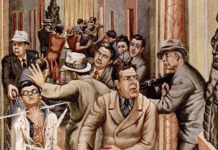


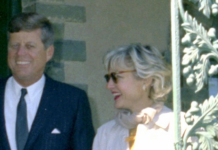




Thanks for taking a look at some of the suspicious aspects of the assassination of John Lennon. I have never been convinced by the official story, not least because Chapman’s alarming connection to the Hinckley family has consistently been ignored by mainstream reporting.
However, I would ask you to look again at your assertion that the Dakota doorman is the same Jose Perdomo that was the CIA’s Cuban asset. May I suggest that you contact David Whelan for details.
Dr. Tom Cowan: RFK, Jr. = trustworthy.
RFK Jr. has some good ideas on reforming medical and food policies but he shouldn’t be fully trusted because he’s a brainwashed Zionist. He also has a lot of skeletons in his closet that can be used to blackmail him.
Thank you for this article.
The reason why Sirhan Sirhan will not be released is because he could then be hypnotised and the secret of who hypnotised him all those years ago revealed. The CIA was probably able to access him as a result of his fall from a horse in September 1966.
I believe that President Johnson was ultimately behind the assassination.
Frank Sturgis, referred to in this article, was also involved in the CIA plans to assassinate President Nixon which were abandoned because one of the team, Edwin Kaiser, backed out when he was told who the target would be.
As for Bresler’s book, he makes some interesting claims such as:
The gun used to shoot Lennon was the same model as that used in the attempted assassination of Governor George Wallace in 1972.
Mark Chapman disliked guns.
Mark Chapman owned none of Lennon’s works and could not, therefore, be a fan.
And so, the idea that the CIA was behind the shooting does seem very plausible. It might well explain why Chapman made no effort to escape.
I would also say that the book: “Chaos: Charles Manson, the CIA, and the Secret History of the Sixties” – by Tom O’Neill – raises many similar questions about whether the Manson family murders were also a CIA operation – (discrediting those peace-loving, drug taking, flower-power hippies once and for all). It was something I had long questioned and considered possible even lacking the new evidence O’Neill presents.